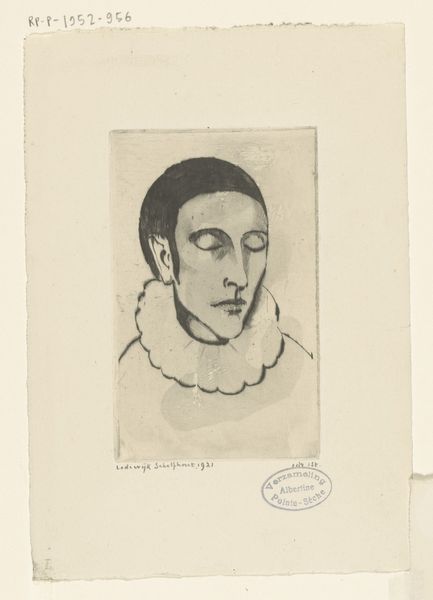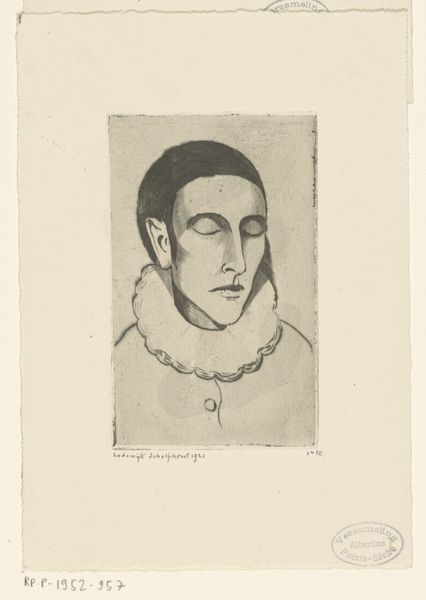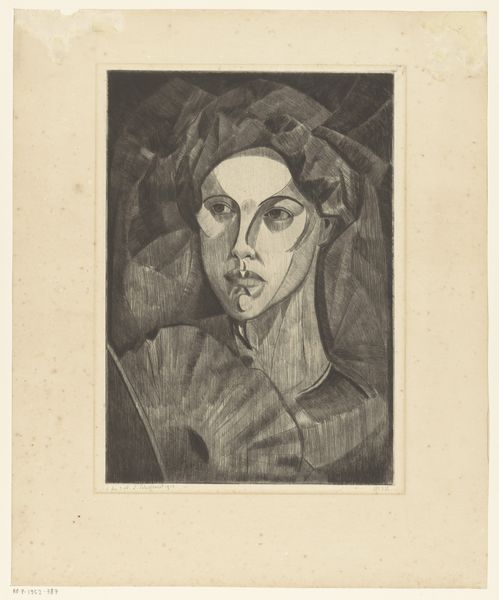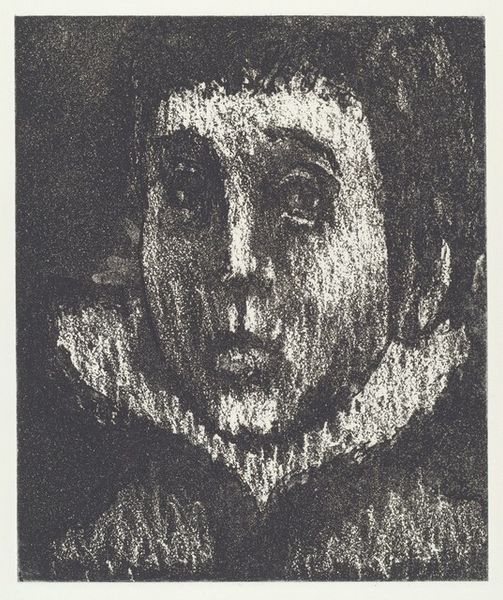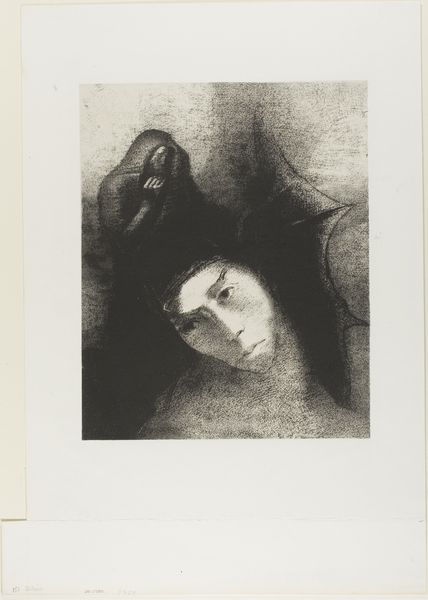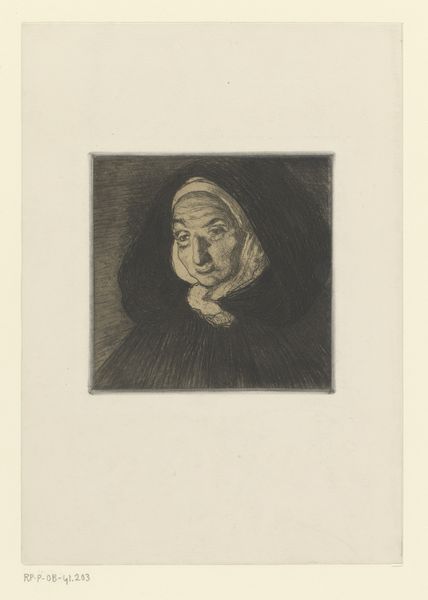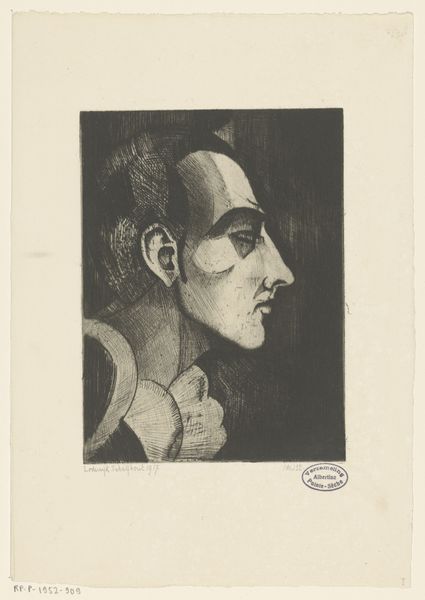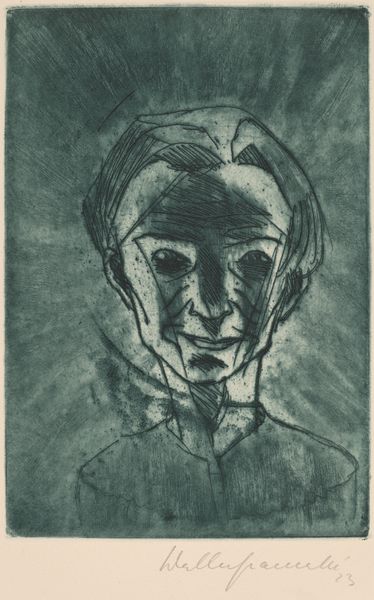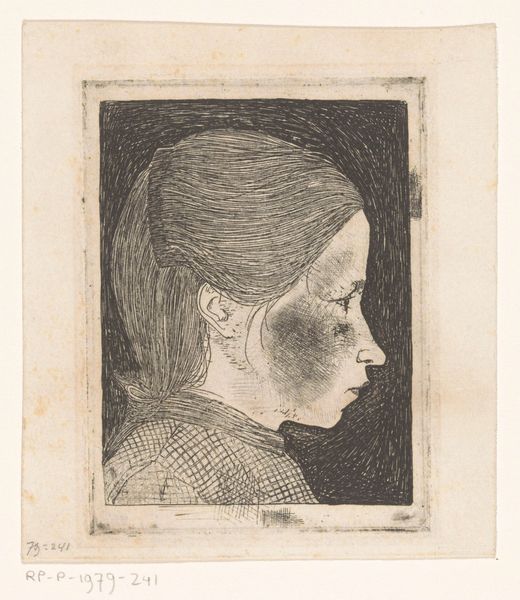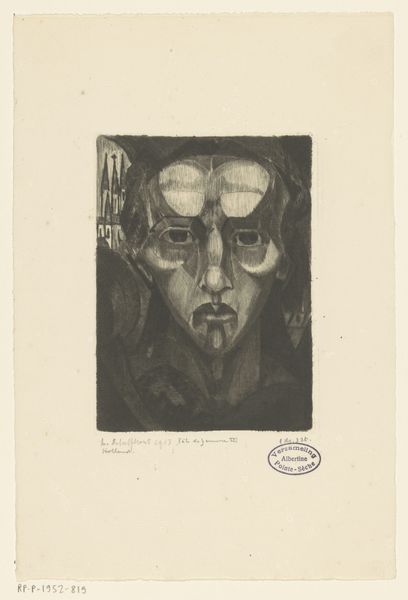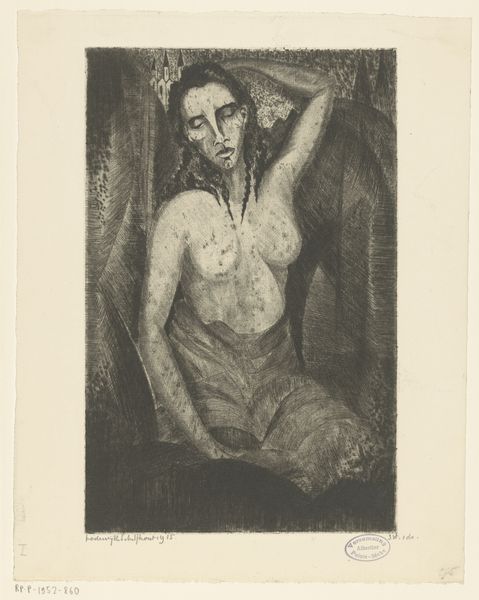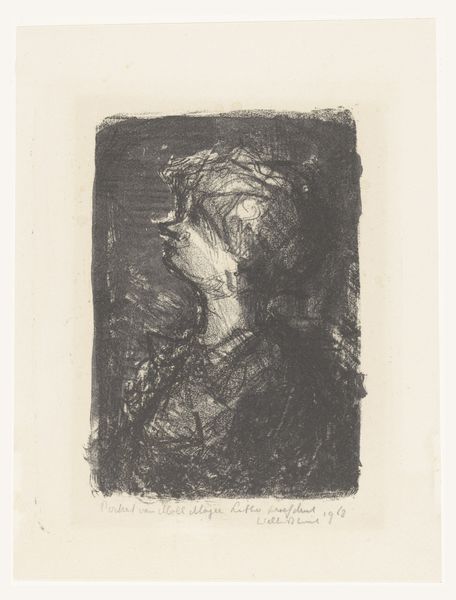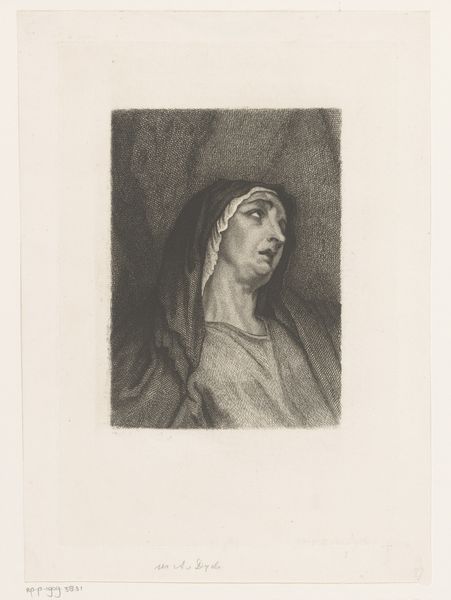
drawing, charcoal
#
portrait
#
drawing
#
charcoal drawing
#
figuration
#
symbolism
#
charcoal
Dimensions: height 430 mm, width 302 mm
Copyright: Rijks Museum: Open Domain
Editor: So, this is Lodewijk Schelfhout’s “Pierrot,” dating from between 1891 and 1943. It’s a charcoal drawing currently held in the Rijksmuseum. I’m struck by the melancholy—he looks so world-weary. What do you see in this piece? Curator: It whispers stories, doesn’t it? Pierrot, the eternal sad clown. But look closer, it is not only the obvious sadness. His eyes are closed—a voluntary shutting out? What secrets are hidden behind those closed lids? Schelfhout beautifully uses charcoal to give the image a dusky quality, but if it’s despair, it's also an elegant despair, you know? It’s like a faded photograph, a memory clinging to life, wouldn't you agree? Editor: That idea of voluntary shutting out is interesting. The dramatic ruff and the somber palette really enhance that feeling. The symbolism almost feels… theatrical. Curator: Theatrical is spot on. Pierrot himself *is* theatre, isn't he? Always acting, even in his supposed solitude. Do you think Schelfhout saw Pierrot's sadness as performance or authentic emotion? Editor: I lean towards authentic. The averted gaze feels too vulnerable for it to be just a show. I wonder if Schelfhout was reflecting his own vulnerabilities? Curator: Ah, that’s a lovely question. Perhaps Pierrot became a mirror, reflecting back something deeply personal, as good art so often does. The universal melancholy is always close to home, isn't it? Editor: Definitely. I came in seeing a sad clown, but now I'm seeing a hidden self-portrait. It makes it much more resonant. Curator: Exactly! And that, my friend, is the magic of art. To peel back the layers and find the truth – or a truth – hidden beneath.
Comments
No comments
Be the first to comment and join the conversation on the ultimate creative platform.
